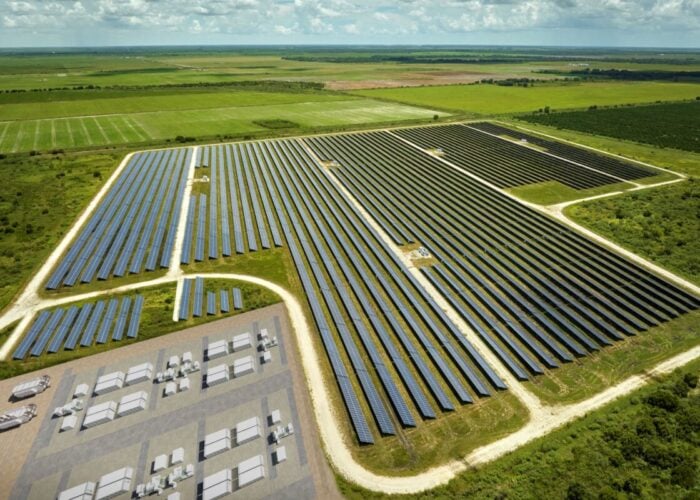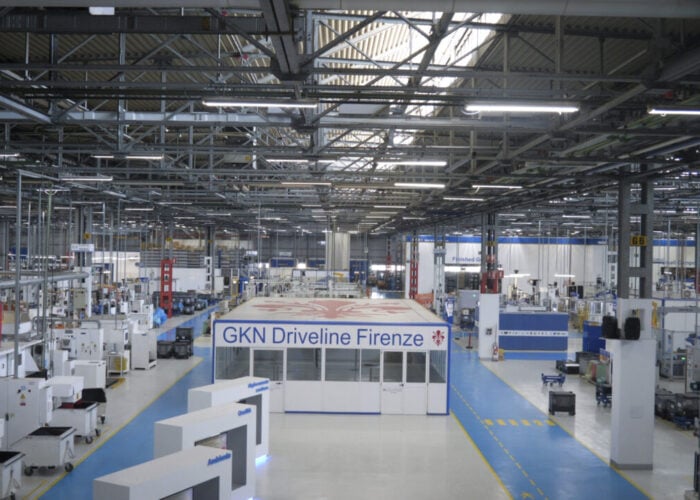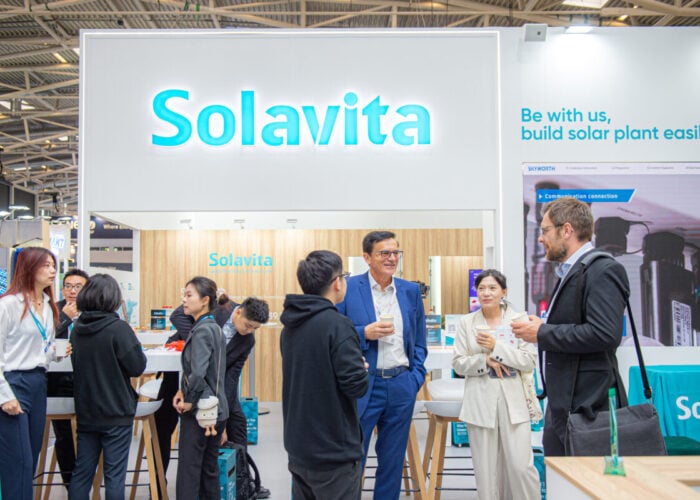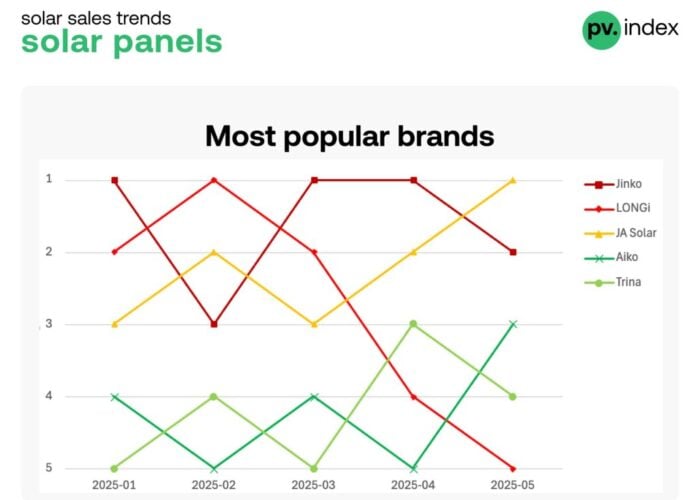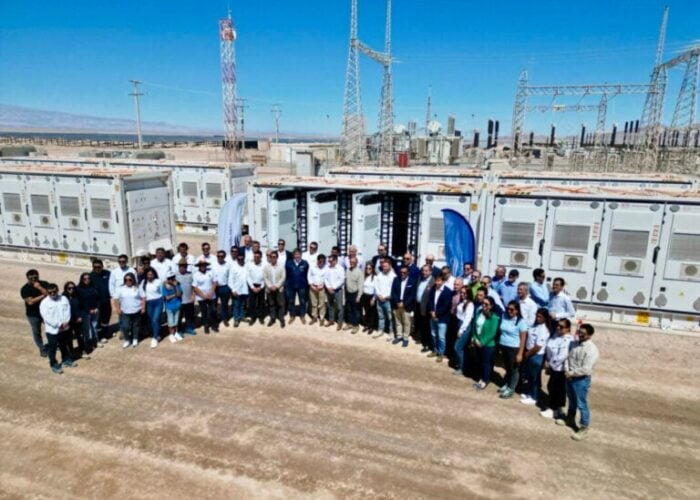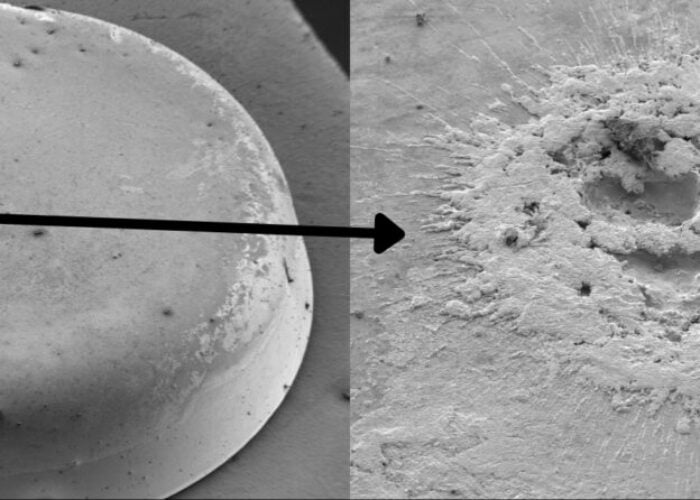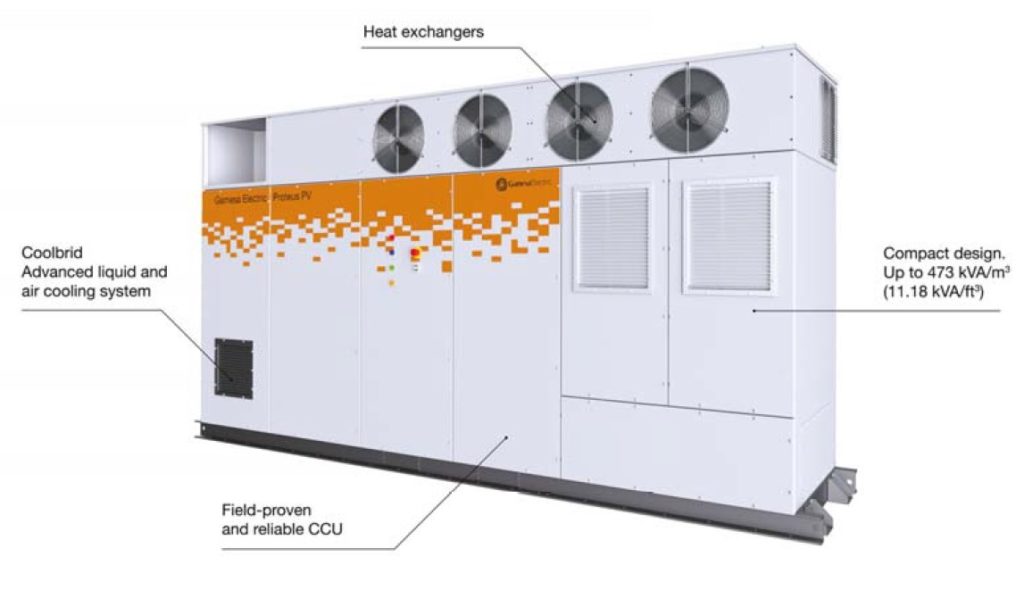
Gamesa Electric’s latest white paper explores the advanced functionalities that solar and battery inverters should be able to provide to enable greater integration of renewables into the grid and thus contribute as a key element to enhanced grid reliability and stability.
The world is going through a significant transformation in the energy sector as renewable energy sources, distributed generation, decarbonisation, and demand increase are rapidly changing traditional sources of energy. In this context, solar photovoltaic (PV) and battery storage inverters must fill the gap left by synchronous generators and be able to offer the same services to ensure stable and secure grid operation.
Unlock unlimited access for 12 whole months of distinctive global analysis
Photovoltaics International is now included.
- Regular insight and analysis of the industry’s biggest developments
- In-depth interviews with the industry’s leading figures
- Unlimited digital access to the PV Tech Power journal catalogue
- Unlimited digital access to the Photovoltaics International journal catalogue
- Access to more than 1,000 technical papers
- Discounts on Solar Media’s portfolio of events, in-person and virtual
The reduced inertia present in the grid, due to the decommissioning of large power plants and the intermittency of renewables, poses significant challenges to its stability. As a result, frequency variations caused by momentary imbalances are higher and recur more often.
In this article, we will discuss the grid functionalities that state-of-the-art inverters should offer in order to meet the most demanding grid requirements. We will take a look at the challenges faced by grid operators and the contribution of the Proteus family of state-of-the-art inverters from Gamesa Electric to address these challenges.
Grid stability and control
In traditional generators, the most widely used device is the synchronous generator, an electrical machine whose shaft speed has a direct relationship with the frequency of the grid. This allows it to adjust its voltage output and respond to changes in grid frequency by modifying its operating point. These devices greatly contribute to the power grid stability due to the damping they provide against disturbances. The stability of any power grid is achieved by controlling parameters such as voltage control, frequency control, and rotor angle control.
Voltage control is performed by controlling the reactive power through devices such as synchronous generators (which allow the dynamic control), capacitor banks, or inductive loads. Frequency control is achieved by balancing the power generated and the power consumed, ensuring a steady grid frequency. Variations of any value will cause a frequency change that has to be corrected by modifying the active power. The rotor angle control is related to the stability of the synchronous generator’s rotor angle and its capacity to keep synchronism after a disturbance.
Challenges faced by grid operators
The decarbonisation process of the energy sector is leading to the substitution of traditional large generators by renewable energy sources such as solar, wind, and energy storage, based on power-lowered decentralised units composed of electronically controlled devices (power converters). The progressive substitution of large generators is becoming an increasing challenge for transmission system operators (TSOs), which must ensure grid reliability and stability despite the entry of these new players while maintaining a null impact on end-users.
As a result, TSOs are forced to impose new features and functionalities on these new energy sources to ensure proper grid operability, coining new terms such as smart grid, grid-forming, or black-start.
Power electronic converters and grid stability
The addition of new energy sources based on power electronic converters to replace rotating electrical machines is leading to variations in the grid behaviour during frequency control regulations. Power electronic converters have a completely different performance compared to rotating machines.
On the one hand, they have a very short timescale response, and on the other, they do not contribute to system damping created after a frequency change due to the absence of massive rotating shafts. This decrease in inertia capacity affects grid control and, in the worst case, it could destabilise it. To address this, grid operators are imposing grid support capabilities to ensure grid stability.
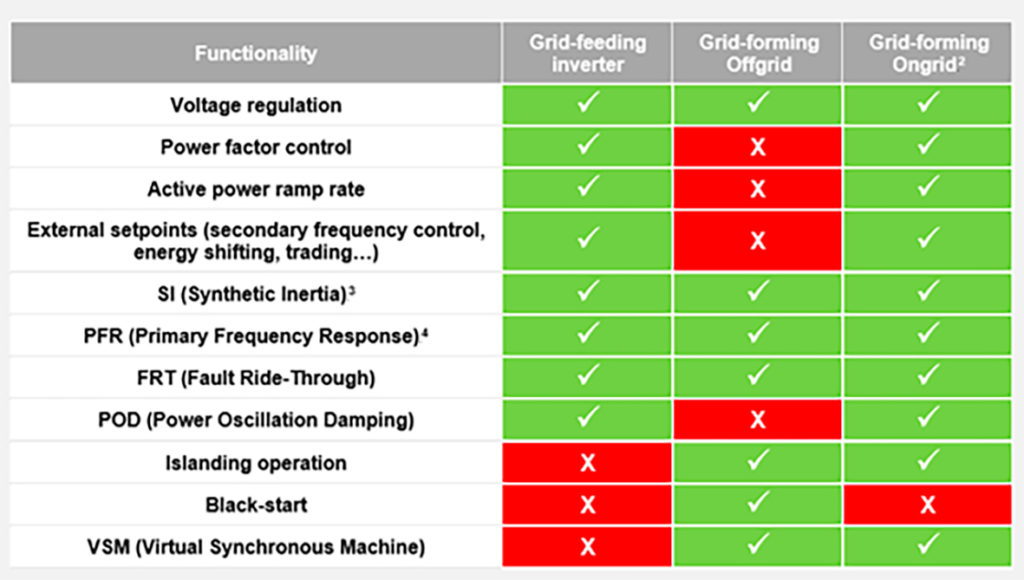
Grid-following inverters are capable of provide synthetic inertia (also known as virtual inertia), where the electronic device can emulate the inertia that used to be provided by rotating machines. However, providing virtual inertia is not enough, it is necessary to provide additional ancillary services to ensure grid stability, such as fast frequency response, black-start, or power quality support.
Advanced grid functionalities in state-of-the-art inverters
In this context, state-of-the-art inverters are the new generation of equipment that incorporates the necessary functionalities to be active elements in grid operation. These functionalities include Fast Frequency Response (FFR) and Black-Start, among others.
In grid-forming mode, the converter is a voltage source (it can create the electrical grid by itself) with the ability to control both the active and reactive power, thus creating and maintaining a stable grid voltage and frequency. The control strategy used is known as Virtual Synchronous Machine (VSM) where the inverter control can emulate the synchronous generator performance.
Grid-feeding with FFR droop vs Grid-forming with FFR droop
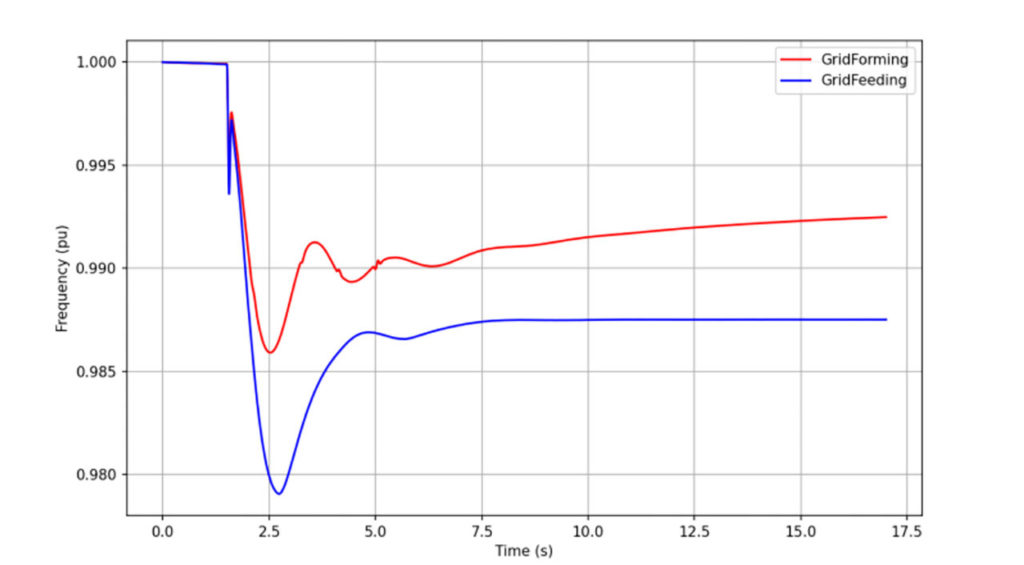
The power response of a BESS with grid-forming is greater and faster than grid-feeding operation, since a system with VSM has greater inertia as well as greater damping. Therefore, in addition to the power that the BESS injects thanks to the droop, another very rapid increase in active power is added due to the contribution of the inherent virtual inertia of the VSM.
Fast Frequency Response (FFR) is a service provided by power converters to compensate for short-term frequency deviations in the grid. This service requires a fast response time from the converter to ensure grid stability. FFR is essential because small deviations in frequency can cause large changes in the grid and lead to instability.
For example, if the frequency of the grid decreases, the active power generated by the power converters must increase to compensate for the deviation. Conversely, if the frequency of the grid increases, the active power generated by the power converters must decrease. Without the ability to respond quickly to frequency changes, the power converter would be unable to stabilise the grid, leading to power outages.
The response must be fast enough, which is why they are normally requested at the inverter level to avoid communication delays. However, one of the main advantages of the Gamesa Electric Orchestra controller is that its quick response time allows it to perform the FFR functionality at plant level rather than at the inverter level.
Black-start is a service that allows the power converter to restart the grid after a blackout. In the event of a blackout, the power converter must be able to start generating power immediately, even without a grid connection, to restore power to critical loads. This requires the power converter to be able to operate in island mode, where it generates power independently of the grid, and then resynchronise with the grid once power has been restored. Black-start is an essential service because it ensures that power can be restored quickly after a blackout, preventing extended power outages.
Gamesa Electric’s Proteus family of inverters is designed to meet the most demanding grid requirements and offers all of the advanced functionalities required for grid support. The Proteus inverters are capable of operating in both grid-following and grid-forming modes, providing the flexibility required to meet the needs of the grid. In addition, the Proteus inverters offer fast response times and the ability to provide virtual inertia, ensuring that the grid remains stable even in the face of large frequency deviations.
To demonstrate the capabilities of the Proteus inverters, Gamesa Electric conducted a series of real-world tests on the equipment. The tests were designed to simulate a variety of grid conditions, including black-start scenarios and frequency deviation events. The results of the tests showed that the Proteus inverters were able to respond quickly to changes in grid conditions and provide the necessary ancillary services to ensure grid stability.
In conclusion, the transition to cleaner energy sources is essential for achieving a zero-carbon future, but it also presents significant challenges for the power grid. The reduced inertia of the grid due to the decommissioning of large power plants and the intermittency of renewable sources has made it necessary for PV and battery storage inverters to fill the gap left by synchronous generators and provide the necessary grid support services to ensure stable and secure grid operation. Grid-forming inverters such as Gamesa Electric’s Proteus family offer the advanced functionalities required for grid support, including fast frequency response, black-start, and power quality.
The White Paper can be viewed on Gamesa Electric website: www.gamesaelectric.com

